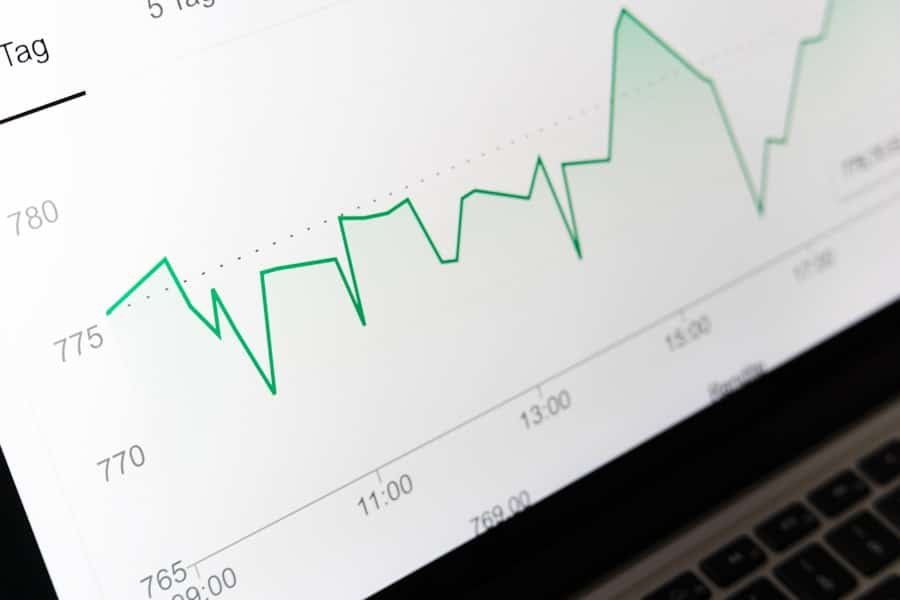In the contemporary landscape of global commerce, the ability to anticipate and respond to market dynamics is paramount. Predictive supply chain analytics has emerged as a critical tool for organisations seeking to enhance their operational efficiency and responsiveness. This analytical approach leverages historical data, statistical algorithms, and machine learning techniques to forecast future events and trends within the supply chain.
By harnessing vast amounts of data generated from various sources, businesses can gain insights that inform decision-making processes, optimise inventory levels, and improve customer satisfaction. The evolution of predictive analytics in supply chain management can be traced back to the increasing complexity of global supply chains. As companies expand their operations across borders, they encounter a myriad of challenges, including fluctuating demand, supply disruptions, and changing regulatory environments.
Predictive analytics offers a solution by enabling organisations to model potential scenarios and assess the impact of various factors on their supply chain performance. This proactive approach not only mitigates risks but also positions companies to seize opportunities in an ever-changing marketplace.
Summary
- Predictive supply chain analytics uses data and statistical algorithms to forecast future events and optimize supply chain processes.
- The benefits of predictive supply chain analytics include improved demand forecasting, better inventory management, and enhanced decision-making.
- Key components of predictive supply chain analytics include data collection, data analysis, predictive modelling, and implementation of insights.
- Challenges and limitations of predictive supply chain analytics include data quality issues, lack of skilled personnel, and the complexity of integrating predictive models into existing systems.
- Successful implementation of predictive supply chain analytics requires a clear strategy, investment in technology, and collaboration between different departments within an organization.
Benefits of Predictive Supply Chain Analytics
The advantages of implementing predictive supply chain analytics are manifold, significantly impacting both operational efficiency and strategic decision-making. One of the most notable benefits is enhanced demand forecasting. Traditional methods often rely on historical sales data and simplistic models, which can lead to inaccuracies.
In contrast, predictive analytics utilises advanced algorithms that consider a multitude of variables, such as seasonality, market trends, and consumer behaviour. This results in more accurate forecasts, allowing businesses to align their inventory levels with actual demand, thereby reducing excess stock and minimising stockouts. Another significant benefit is improved risk management.
Supply chains are inherently vulnerable to disruptions caused by natural disasters, geopolitical tensions, or supplier failures. Predictive analytics enables organisations to identify potential risks by analysing patterns and trends in historical data. For instance, if a particular supplier has a history of delays during certain months, businesses can proactively seek alternative suppliers or adjust their inventory strategies in anticipation of potential disruptions.
This foresight not only safeguards operations but also enhances resilience in the face of uncertainty.
Key Components of Predictive Supply Chain Analytics

To effectively harness the power of predictive supply chain analytics, several key components must be integrated into the analytical framework. Data collection is the foundational element; organisations must gather data from diverse sources, including internal systems such as Enterprise Resource Planning (ERP) and Customer Relationship Management (CRM) platforms, as well as external sources like market reports and social media trends. The quality and breadth of this data are crucial, as they directly influence the accuracy of predictive models.
Once data is collected, the next step involves data processing and analysis. This phase typically employs statistical techniques and machine learning algorithms to identify patterns and correlations within the data. For example, regression analysis might be used to understand how changes in pricing affect demand, while clustering techniques can segment customers based on purchasing behaviour.
The insights gleaned from this analysis form the basis for predictive modelling, which allows organisations to simulate various scenarios and forecast future outcomes.
Challenges and Limitations of Predictive Supply Chain Analytics
Despite its numerous advantages, predictive supply chain analytics is not without its challenges and limitations. One significant hurdle is the issue of data quality. Inaccurate or incomplete data can lead to flawed predictions, which may result in misguided business decisions.
Organisations often struggle with data silos, where information is trapped within different departments or systems, making it difficult to obtain a comprehensive view of the supply chain. Ensuring data integrity and consistency across all sources is essential for effective predictive analytics. Another challenge lies in the complexity of developing and maintaining predictive models.
The algorithms used in predictive analytics require continuous refinement and validation to remain effective. As market conditions change or new variables emerge, models must be updated accordingly. This necessitates a skilled workforce proficient in data science and analytics, which can be a barrier for many organisations lacking the necessary expertise or resources.
Furthermore, there is often resistance to adopting new technologies within established companies, as employees may be hesitant to change long-standing processes.
Implementation of Predictive Supply Chain Analytics
Implementing predictive supply chain analytics involves a systematic approach that encompasses several stages. Initially, organisations must define their objectives clearly; understanding what they aim to achieve with predictive analytics is crucial for guiding the implementation process. This could range from improving inventory turnover rates to enhancing supplier performance or optimising logistics operations.
Following this, organisations should invest in the necessary technology infrastructure. This includes selecting appropriate software tools that facilitate data collection, processing, and analysis. Cloud-based solutions have gained popularity due to their scalability and accessibility, allowing businesses to leverage advanced analytics without significant upfront investments in hardware.
Additionally, fostering a culture that embraces data-driven decision-making is vital; training employees on how to interpret analytical insights can empower them to make informed choices that align with organisational goals.
Case Studies of Successful Predictive Supply Chain Analytics

Numerous companies have successfully implemented predictive supply chain analytics, reaping substantial benefits in terms of efficiency and profitability. One notable example is Unilever, a global consumer goods company that has integrated predictive analytics into its supply chain operations. By analysing historical sales data alongside external factors such as weather patterns and economic indicators, Unilever has significantly improved its demand forecasting accuracy.
This has enabled the company to optimise its inventory levels across various product lines, reducing waste and ensuring that products are available when consumers need them. Another compelling case is that of Amazon, which utilises predictive analytics extensively throughout its supply chain. The e-commerce giant employs sophisticated algorithms to anticipate customer demand based on browsing history, purchase patterns, and even social media activity.
This allows Amazon to strategically position inventory in fulfilment centres closer to customers, thereby minimising delivery times and enhancing customer satisfaction. The company’s ability to predict trends not only streamlines operations but also provides a competitive edge in the fast-paced retail environment.
Future Trends in Predictive Supply Chain Analytics
As technology continues to evolve, several trends are emerging that will shape the future of predictive supply chain analytics. One such trend is the increasing integration of artificial intelligence (AI) and machine learning into predictive models. These technologies enable more sophisticated analyses by processing vast amounts of data at unprecedented speeds.
As AI algorithms become more advanced, they will enhance the accuracy of predictions and allow for real-time adjustments based on changing conditions. Another trend is the growing emphasis on sustainability within supply chains. Companies are increasingly recognising the importance of environmental responsibility and are seeking ways to reduce their carbon footprint.
Predictive analytics can play a pivotal role in this endeavour by optimising logistics routes to minimise fuel consumption or forecasting demand for sustainable products more accurately. As consumers become more environmentally conscious, businesses that leverage predictive analytics for sustainability will likely gain a competitive advantage.
Conclusion and Recommendations for Utilizing Predictive Supply Chain Analytics
In light of the myriad benefits associated with predictive supply chain analytics, organisations are encouraged to embrace this transformative approach as part of their strategic initiatives. To maximise the potential of predictive analytics, companies should prioritise data quality by investing in robust data management practices that ensure accuracy and consistency across all sources. Additionally, fostering a culture that values data-driven decision-making will empower employees at all levels to leverage analytical insights effectively.
Furthermore, organisations should remain agile in their approach to predictive modelling; continuous monitoring and refinement of models will ensure they remain relevant in an ever-evolving market landscape. By staying abreast of technological advancements and emerging trends in predictive analytics, businesses can position themselves for sustained success in an increasingly competitive environment. Ultimately, those who harness the power of predictive supply chain analytics will not only enhance their operational efficiency but also drive innovation and growth in their respective industries.
Predictive supply chain analytics is crucial for companies like the MG Car Company, as highlighted in the article “MG Car Company Case Study”. This tool allows businesses to forecast demand, optimise inventory levels, and improve overall operational efficiency. Understanding how the performance of the stock market affects small businesses, as discussed in the article “How does the performance of the stock market affect small businesses?”, can also help in making informed decisions regarding supply chain management. Additionally, learning about innovative technologies like the Firefly drone, as explored in the article “The better way to use a Firefly”, can provide new opportunities for enhancing supply chain operations.
FAQs
What is predictive supply chain analytics?
Predictive supply chain analytics is the use of data, statistical algorithms, and machine learning techniques to identify the likelihood of future outcomes in the supply chain. It involves analysing historical data to make predictions about future events, such as demand forecasting, inventory management, and supplier performance.
How does predictive supply chain analytics work?
Predictive supply chain analytics works by collecting and analysing large amounts of historical data from various sources within the supply chain, such as sales, production, and logistics. This data is then used to build predictive models that can forecast future events and trends, helping businesses make more informed decisions and improve their supply chain operations.
What are the benefits of using predictive supply chain analytics?
Some of the benefits of using predictive supply chain analytics include improved demand forecasting, better inventory management, reduced supply chain risks, increased operational efficiency, and enhanced decision-making. By leveraging predictive analytics, businesses can gain a competitive advantage and improve their overall supply chain performance.
What are some common applications of predictive supply chain analytics?
Common applications of predictive supply chain analytics include demand forecasting, inventory optimisation, supplier performance management, predictive maintenance, risk management, and transportation planning. These applications help businesses anticipate and respond to changes in the supply chain more effectively.
What are the key technologies used in predictive supply chain analytics?
Key technologies used in predictive supply chain analytics include data mining, machine learning, artificial intelligence, predictive modelling, and advanced analytics tools. These technologies enable businesses to extract valuable insights from their data and make accurate predictions about future supply chain events.
